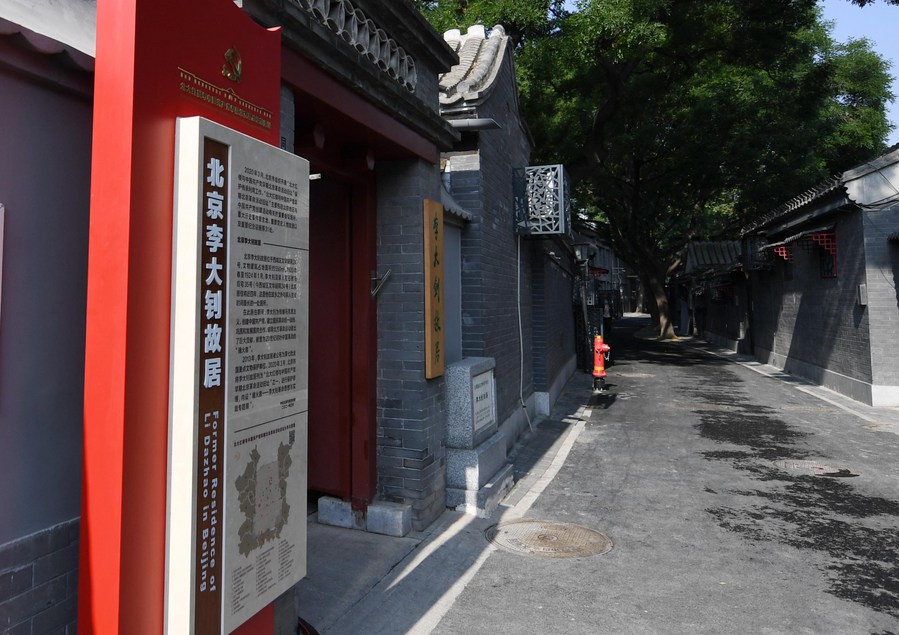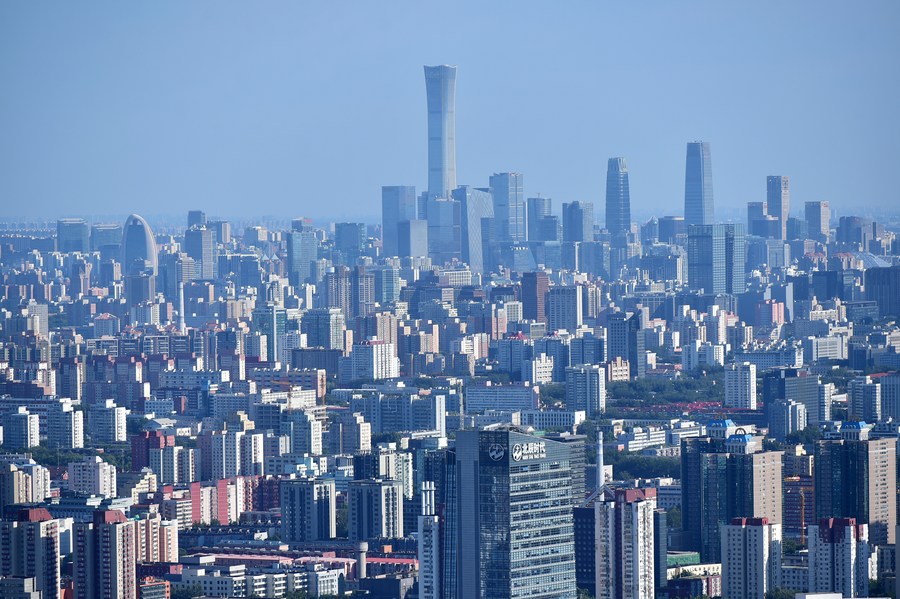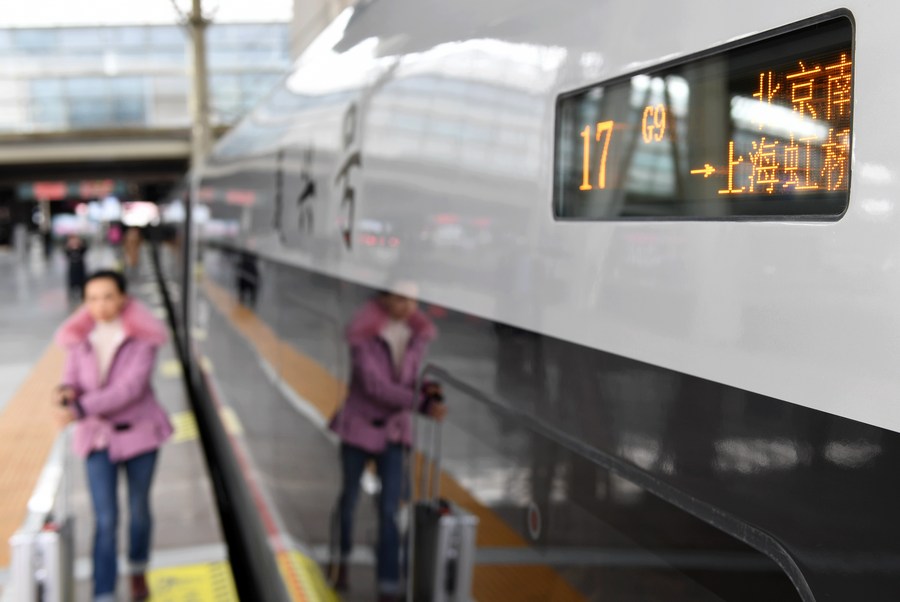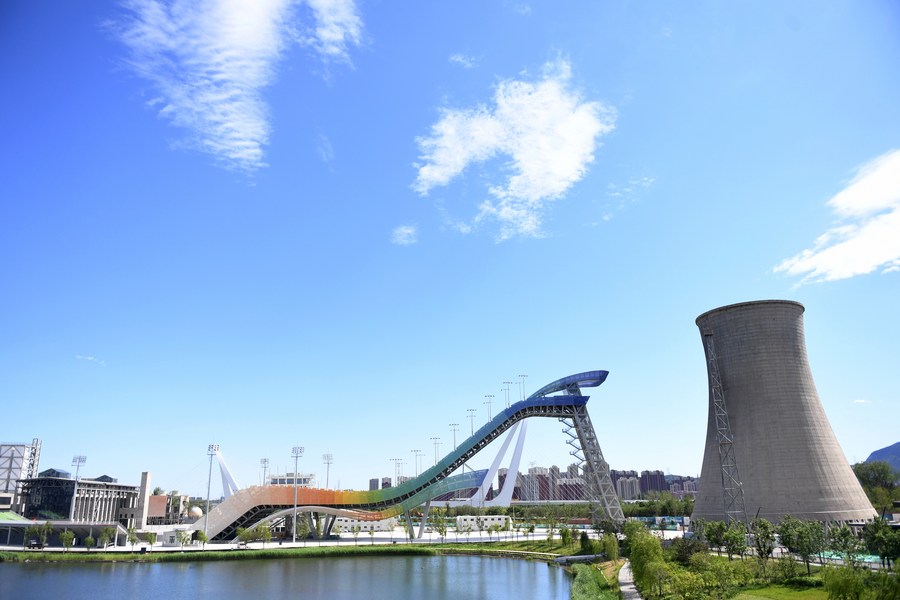CPC100: Party leads China's rejuvenation through a century-long tale of two cities
-- New exhibitions featuring the history of the Communist Party of China (CPC) and celebrations of the Party's upcoming centenary are heating up atmosphere in Beijing and Shanghai, both of which have been standing witness to the struggle and glory of the CPC over the past 100 years.
-- The two cities had suffered tremendously since the Opium War in 1840, but have been playing vital roles in national development under the CPC leadership since their liberation in 1949.
Exhibitions and celebrations are well underway in Beijing and Shanghai as the Communist Party of China (CPC) is set to embrace its centenary on July 1.
An exhibition on the history of the CPC opened on Friday in Beijing, showing how the CPC has united and led the Chinese people in blazing great paths and making massive achievements over the past 100 years, as well as the fine spirit and precious experience drawn from within.
A number of early revolutionary CPC sites, including the former residence of Li Dazhao, a pioneer of the CPC, and the first chamber collecting Marxist works, opened to the public in Beijing on June 1.

Photo taken on June 1, 2021 shows the former residence of Li Dazhao in Beijing, Capital of China. (Xinhua/Zhang Chenlin)
An exhibition on the role of Peking University in the early history of the CPC is also ongoing at Peking University Library.
Prof. Huang Daoxuan of Peking University (PKU) said that universities, limited in number over 100 years ago and mainly located in Beijing, made the city the center of the New Culture Movement and the May Fourth Movement, both of which greatly contributed to the early spread of Marxism in China and the founding of the CPC.
Xiong Yuezhi, a scholar studying Shanghai's history, said that in the 1920s, Shanghai had many favorable conditions such as an expanding working class, a major publishing center, and convenient transportation and communication systems. Through the unremitting efforts of the Chinese Marxists, the CPC came to the stage in Shanghai.

Photo taken on Sept. 9, 2020 shows the view of the skyscrapers of the Central Business District (CBD) in Beijing, capital of China. (Xinhua/Chen Zhonghao)
A century has passed. A party that began with some 50 members now has over 91 million.
Through concentrated renovations and decoration, the presence of "red marks" is increasing in both Beijing and Shanghai, reminding people of the past sacrifices and glory of a party that is leading the Chinese people on the great path of national revival.
"Only under the CPC's leadership can our country have such great development. We must unswervingly follow the Party," said Zhou Liru, a tourist from east China's Shandong Province, while visiting an exhibition on the 100-year journey of the CPC at the National Museum of China.
CITIES OF THE FUTURE
The development of air routes, high-speed railways and expressways between Beijing and Shanghai has also stood witness to China's fast development. A four-and-a-half-hour journey from Beijing to Shanghai, about 1,300 km apart, by high-speed train was unimaginable a century ago.

A Fuxing bullet train is seen at Beijing South Railway Station in Beijing, capital of China, Jan. 5, 2019. (Xinhua/Zhang Chenlin)
The Shougang (meaning "capital steel") industrial sites park, once a large factory founded in 1919 and producing steel in Beijing, has now become an urban landmark filled with modern elements such as automatic vehicles.
Steel mills have been transformed into the office buildings of the Beijing Organizing Committee for the 2022 Olympic and Paralympic Winter Games, and factory workshops have been converted into science and technology museums.
"Shougang, where we spent a lifetime working, is getting more and more beautiful," said retiree Zhang Yudong.

Photo taken on May 28, 2021 shows Shougang ski jumping platform in Beijing, capital of China. (Xinhua/Zhang Chenlin)
The whole of Shanghai has become a ground for expositions. Liang Qichao, a pioneering reformer, in 1902 dreamed that Shanghai could hold a grand world expo. That dream became a reality. In 2010, Shanghai presented a remarkable expo to the world.
The original site of Jiangnan Shipyard was transformed into the site for the World Expo. The original industrial belt along the city's Huangpu River is now becoming a "leisure belt" for residents.
Looking back, the two cities have suffered tremendously since the Opium War in 1840. Over 100 years ago, Li Dazhao and Chen Duxiu, pioneers of the CPC, firmly believed that socialism could strengthen the country and lead the Chinese people to prosperity.
Under the leadership of the CPC, Beijing and Shanghai were liberated in 1949. Through the efforts of generations, China has become the second-largest economy in the world with improved national strength and international competitiveness.

Photo taken on Nov. 11, 2020 shows a view of the China (Shanghai) Pilot Free Trade Zone at Pudong New Area in Shanghai, east China. (Xinhua/Fang Zhe)
Beijing and Shanghai's GDPs respectively exceeded 3.6 trillion yuan (about 558 billion U.S. dollars) and 3.8 trillion yuan in 2020, and per capita disposable incomes hit 69,434 yuan and 72,232 yuan.
The two municipalities have been playing vital roles in national development, said Cheng Meidong, executive deputy director of the PKU research institute for the CPC's history.
And the robust development momentum continues. According to government plans, Beijing will take the lead in basically realizing socialist modernization by 2035 and become an inclusive capital with sound governance and a favorable environment for international exchanges.
By 2035, Shanghai will be basically built into a city of innovation, humanity and ecology, a socialist modern international metropolis with global influence, and a people's city with Chinese characteristics.
"One hundred years ago, Li Dazhao and many revolutionaries dedicated their lives to China for a bright future. Today, this strong and prosperous country is just as they wished it to be," said Li Xiaoli, Li's great-granddaughter.
(Video reporter: Pan Xu, Di Chun, Wu Xia, Wang Pu; Video editor: Liu Xiaorui) ■